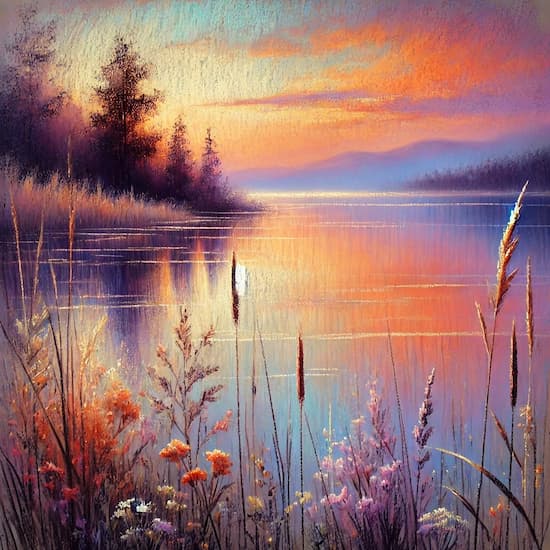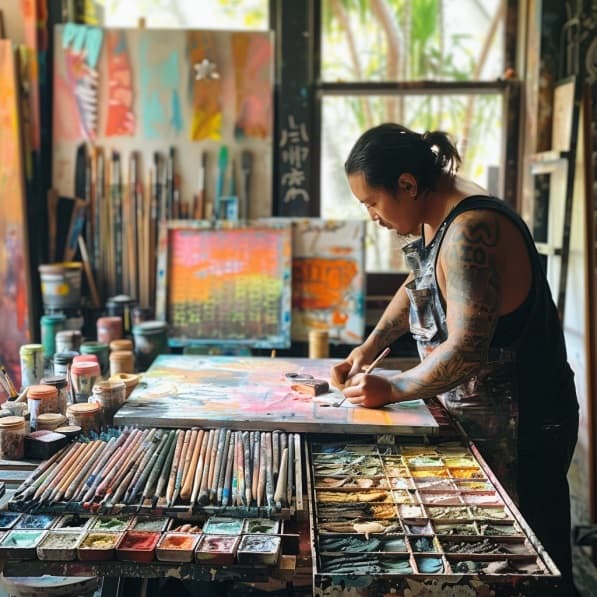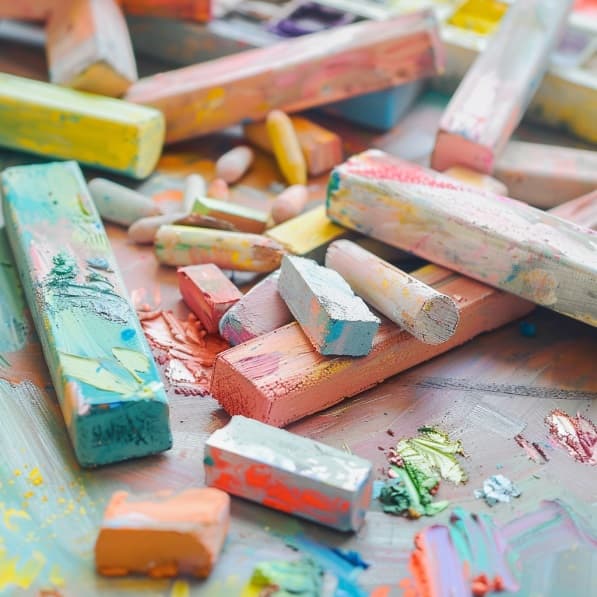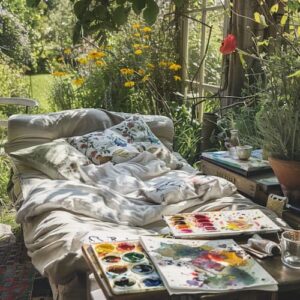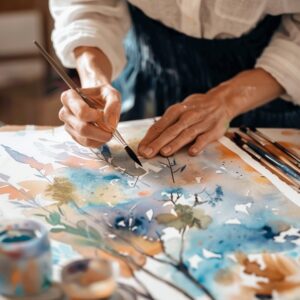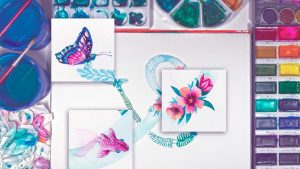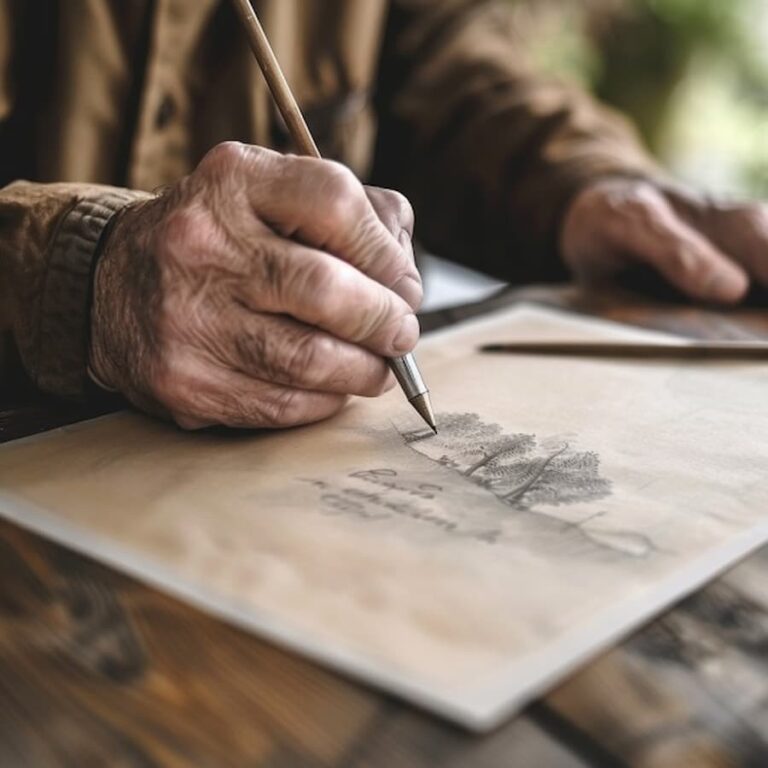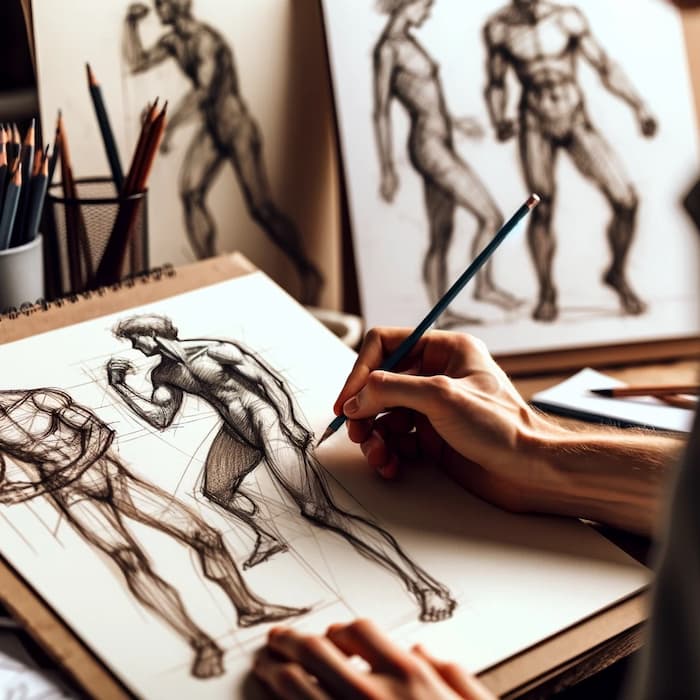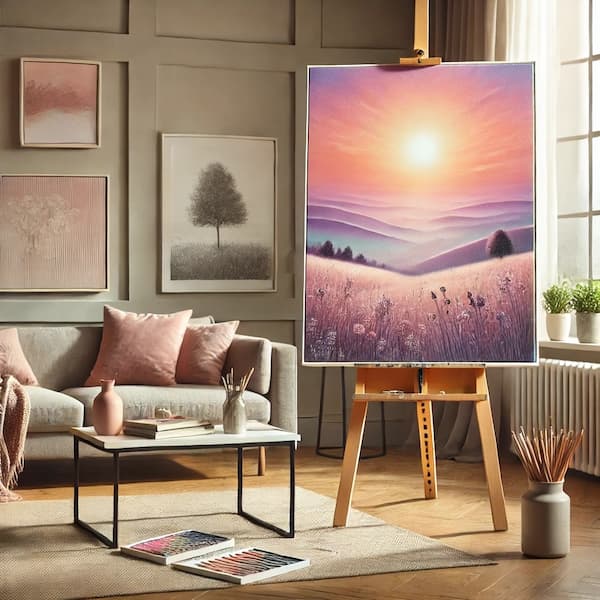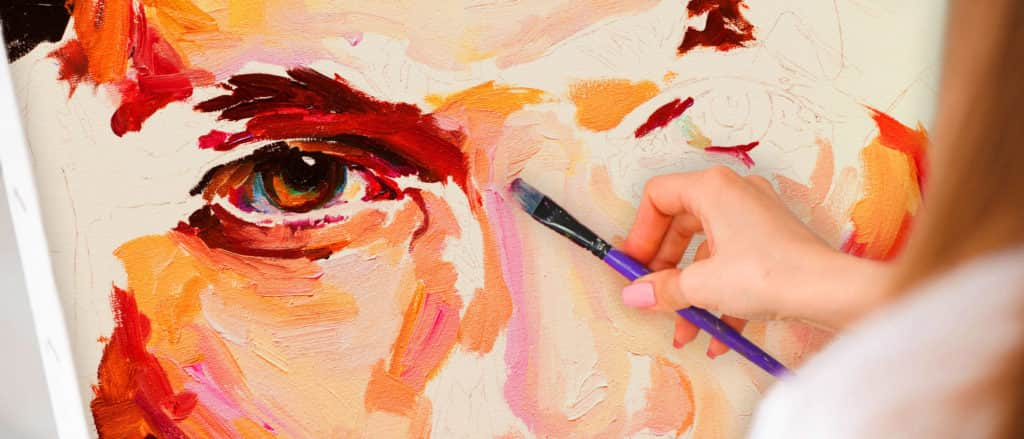Pastel painting is one of the most versatile and expressive artistic techniques.
In this article, we will explore the basics of pastel painting, from the choice of materials to the essential techniques for mastering this art.
Introduction to Pastel Painting
Pastels, known for their vibrant range of colors and textures, offer a unique experience for artists.
Unlike other mediums such as oil or watercolor, pastel combines the qualities of drawing and painting in a compact and accessible form.
But what makes pastel so special?
What are Pasteles?
Pastels are sticks of dry pigment that are mixed with a binder to hold their shape.
There are three main types of pastels:
- Dry Pastels: Include soft and hard pastels.
They are ideal for a wide range of techniques due to their ability to blend and blend easily. - Oil Pastels: Contain oils that give them a creamy texture.
They are perfect for thicker and layered effects. - Pastels in Bars: Combine characteristics of dry pastels and oil pastels, offering a balance between fluidity and texture.
Basic Principles of Pastel Painting
The first step in painting with pastels is to understand how the different types of pastels work and how they can be applied to various surfaces.
Materials Needed and Choice of Cakes
- Soft Pastels: They offer a wide variety of vibrant colors and are easy to blend.
However, their soft texture can be a challenge for beginners. - Hard Pastels: They are ideal for details and fine lines due to their firmer consistency.
- Oil Pastels: Provide a more robust finish and are excellent for layering and texturing.
Papers and Supports
The choice of paper is crucial to the success of a pastel painting.
Textured papers allow for better pigment adhesion.
Some of the most recommended include:
- Canson Mi-Teintes paper: Popular for its texture and variety of colors.
- Sand Paper: Offers a rougher texture, ideal for retaining several layers of cake.
- Pastelmat paper: Combines smoothness and texture, providing a unique surface to work on.
Other Materials
- Fixative: Used to fix the pastel and prevent stains.
- Diffusers or Tortillones: Tools for blurring and mixing colors.
- Gloves and Mask: To protect from cake dust.
Pastel Painting Techniques
Once you have your materials, it’s time to explore basic pastel painting techniques.
- Blurring Technique: Blurring is essential for creating smooth transitions and gradient effects.
You can blend with your fingers, a soft cloth, or a blender.
The key is to apply the pastel in light layers and blend to the desired softness. - Layering: The layering technique allows for depth and texture.
Start with lighter colors and work toward darker colors, applying each layer gently to avoid saturating the paper. - Texture Effects: To create texture, you can use techniques such as scratching or rubbing.
Scratching involves scraping off the top layer of pastel to reveal the color underneath.
Rubbing uses tools such as stiff brushes or spatulas to create patterns on the surface. - Color Blending: Color blending in pastels can be achieved in several ways.
One of the most common is to overlap layers of different colors and blend them.
You can also mix directly on the palette before applying to the paper.
Care and Conservation
Caring for your paints and materials is crucial to maintain their quality over time.
- Fixing the Work: Applying a fixative at the end of your work helps protect the pastel from smudging and wear.
Use spray fixatives in a well-ventilated area and with light coats to prevent colors from bleeding. - Storage: Store your paints in protective folders or frames with glass to avoid direct contact with the surface.
Upright storage is ideal to prevent pastel dust from accumulating. - Material Maintenance: Keep your cakes organized and clean.
You can use a box with compartments and a soft cloth to wipe off dust residue.
Tips and Tricks for Beginners
-Practice Light Hand
Light pressure when applying the pastel allows for smoother layers and better blending possibilities.
Avoid pressing too hard, as this can saturate the paper and make correction difficult.
-Experiment with Textures
Don’t limit yourself to using only your fingers to blend.
Try different tools such as brushes, sponges, and blenders to see how they affect the texture and appearance of the cake.
-Use Color Strategically
Choose complementary colors to create contrast and analogous colors for smooth transitions.
Experiment with color combinations to discover new palettes.
-Learn from the Masters
Look at works by well-known artists who use pastel for inspiration and to learn new techniques.
Looking at how they handle light, color, and texture can offer valuable insights.
-Keep your work area clean.
Cake dust can be harmful if inhaled in large quantities.
Be sure to work in a well-ventilated area and regularly clean your workspace.
Pastel painting offers an exciting opportunity to explore color and texture in a direct and tactile way.
With these basic principles, you’ll be well on your way to mastering this technique and creating vibrant, dynamic works of art.
To learn how to work with pastels like a real professional, knowing all its characteristics, use of materials and how to get the most out of this technique, visit our Painting Course with Lifetime Access + Workshops.
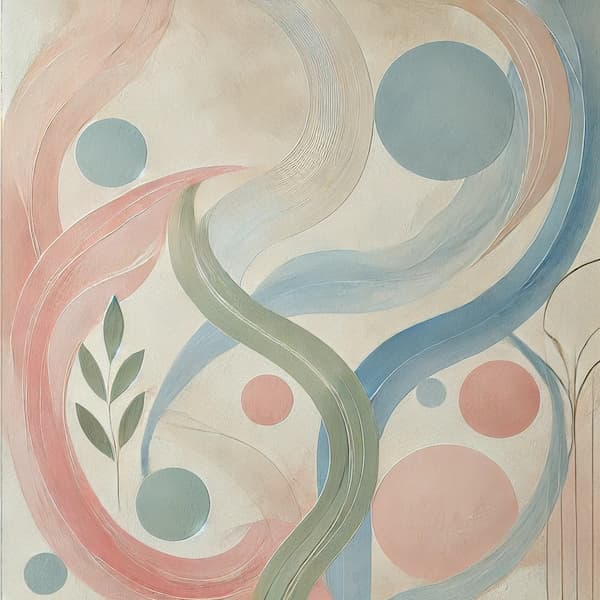
Tipos de Cuadros Decorativos en Tonos Pastel
Cuando piensas en cuadros decorativos en tonos pastel, hay varias opciones que puedes considerar, dependiendo del estilo que busques para tu hogar. A continuación, presentamos algunos de los más populares:
Cuadros Abstractos en Tonos Pastel
El arte abstracto es perfecto para aquellos que desean una pieza decorativa que combine simplicidad y sofisticación. Los cuadros decorativos color pastel abstractos ofrecen una combinación de formas y colores suaves que se fusionan para crear un efecto armónico en cualquier espacio. Además, este tipo de cuadros permiten una mayor flexibilidad, ya que se adaptan a una amplia gama de estilos decorativos.
Cuadros Florales en Tonos Pastel
Las flores han sido un tema clásico en el arte decorativo, y los cuadros con representaciones florales en tonos pastel no son la excepción. Estos cuadros son perfectos para quienes buscan un toque romántico o natural en sus espacios. Los cuadros decorativos en tonos pastel con motivos florales pueden ir desde delicadas acuarelas hasta impresiones modernas de grandes flores en tonos suaves.
Cuadros Minimalistas en Tonos Pastel
El minimalismo sigue siendo una tendencia fuerte en la decoración de interiores, y los cuadros decorativos en tonos pastel minimalistas son una excelente opción para quienes prefieren una estética más limpia. Este tipo de cuadros suelen centrarse en líneas simples, figuras geométricas o incluso manchas de color, todo en una gama cromática suave y apacible.
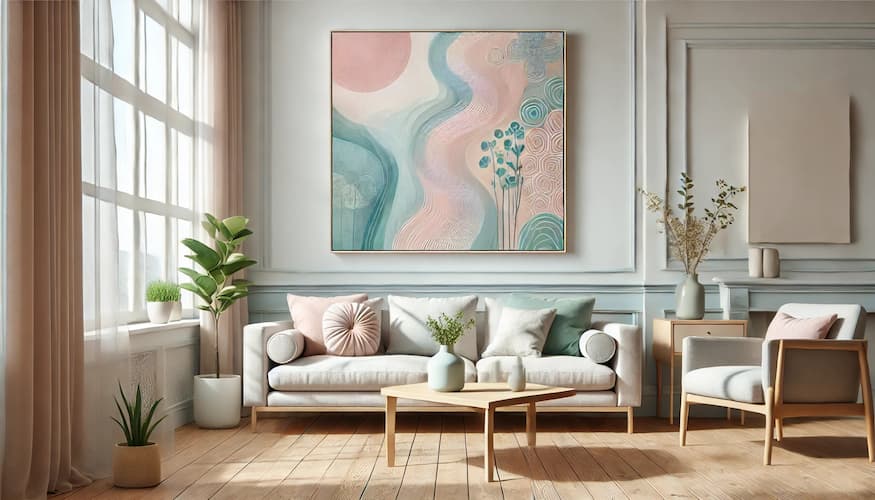
Beneficios de Incorporar Cuadros Decorativos en Tonos Pastel en la Decoración
Incorporar cuadros decorativos en tonos pastel en tu hogar no solo es una cuestión de estética, sino que también tiene múltiples beneficios prácticos.
Fomenta la Creatividad y la Relajación
El color tiene un gran impacto en nuestras emociones, y los tonos pastel, en particular, son conocidos por tener efectos calmantes. Al rodearte de colores suaves, puedes fomentar una sensación de paz y tranquilidad, ideal para quienes buscan relajarse en su hogar después de un largo día. Además, los cuadros decorativos en tonos pastel pueden inspirar creatividad al ofrecer un entorno visualmente placentero y armonioso.
Adaptables a Diferentes Estilos Decorativos
Otra gran ventaja de los cuadros decorativos color pastel es su adaptabilidad. No importa si tu hogar tiene un estilo rústico, moderno o ecléctico; siempre podrás encontrar cuadros en tonos pastel que complementen y realcen la estética de tu espacio sin competir con otros elementos decorativos.
Para aprender a trabajar con pastel como un auténtico profesional, conociendo todas sus características, uso de materiales y cómo sacarle el máximo partido a esta técnica, visita nuestro Curso de Pintura con Acceso Vitalicio + Talleres.

